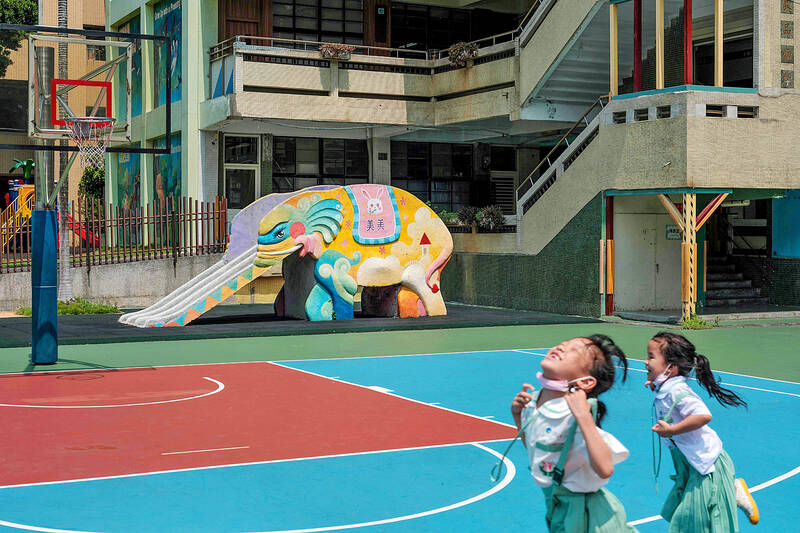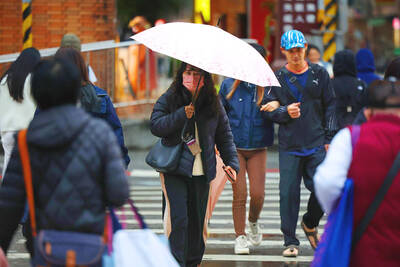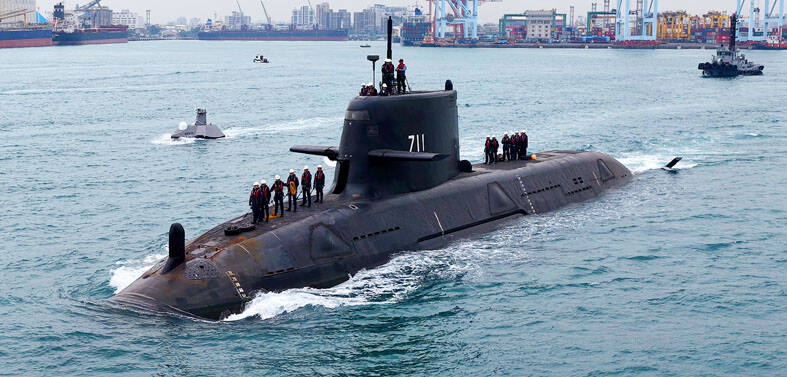In playgrounds across Taiwan, a jumbo surprise awaits children in the form of colorful elephant slides, evoking nostalgia for older Taiwanese, who say the structures used to be ubiquitous across the nation.
Affectionately known as “Grandpa Elephant,” the slides are primarily made of terrazzo or concrete and were once a regular schoolyard feature during the 1960s and 1970s.
However, their sightings have dwindled since the nation tightened playground safety regulations, with some slides removed, while others are off-limits to children.

Photo: Yan ZHAO, AFP
“The elephant slide is like a friend who grew up with us,” said Yu Chiu-ling (尤秋玲), 58, who has been documenting the remaining structures since 2010.
Yu, a writer, said the idea for the project was ignited by a visit to her old elementary school in Changhua County’s Lukang Township (鹿港) where the sight of the elephant slide sparked intense nostalgia in her.
“Many things had changed except the elephant. It’s still round and chubby, and it hasn’t aged, it’s well-preserved,” Yu told reporters. “It was quite emotional to see it again, it felt like it had been waiting for me.”
Yu thought others her age would have similar feelings so she began visiting schools across Taiwan to record the remaining elephant slides, sharing photographs, stories and their locations on Facebook.
“The elephant slide is a memory shared across generations of Taiwanese, who find resonance in it,” she said.
Her Facebook group, “Find our Elephant Friends (slides),” has become a gathering place for those with fond memories of their childhood slides, with members sharing locations and stories of the ones they rediscovered.
Some of the slides have colorful tiles, others fantastical scenes painted on them, and a few rare ones resemble a real elephant — although all feature a wide trunk that doubles as a slide.
The origin of the elephant slide remains unclear. Most believe it was chosen as a playground staple because an elephant trunk was ideal for children to glide down. Some have suggested it was inspired by Taiwan’s beloved Lin Wang (林旺), an Asian elephant born in 1917.
Lin Wang was captured by Chinese troops from Japanese forces in Myanmar during World War II. He was transported to Taiwan in 1947 and died in 2003 at Taipei Zoo at the age of 86.
Most of the slides still standing today have slogans on them reflecting the era of their creation.
Older ones feature phrases like: “Strengthen your body to build the country” and “Love our country” — evoking a sense of patriotism that Taiwan’s then Chinese Nationalist Party (KMT) government wanted to foster after fleeing China for Taiwan.
Newer structures say “beauty” and “liveliness.”
Between 400 and 450 slides remain, said Hsiu Pi-cheng, a Taiwanese designer who has traversed the nation to photograph the slides and pinned their locations on an online map.
However, many schools have sealed off the slides, transforming them into art installations instead.
“I hope they can be preserved and continue to create happy memories for children,” Yu said.

SHIPS, TRAINS AND AUTOMOBILES: The ministry has announced changes to varied transportation industries taking effect soon, with a number of effects for passengers Beginning next month, the post office is canceling signature upon delivery and written inquiry services for international registered small packets in accordance with the new policy of the Universal Postal Union, the Ministry of Transportation and Communications said yesterday. The new policy does not apply to packets that are to be delivered to China, the ministry said. Senders of international registered small packets would receive a NT$10 rebate on postage if the packets are sent from Jan. 1 to March 31, it added. The ministry said that three other policies are also scheduled to take effect next month. International cruise ship operators

NUMBERS IMBALANCE: More than 4 million Taiwanese have visited China this year, while only about half a million Chinese have visited here Beijing has yet to respond to Taiwan’s requests for negotiation over matters related to the recovery of cross-strait tourism, the Tourism Administration said yesterday. Taiwan’s tourism authority issued the statement after Chinese-language daily the China Times reported yesterday that the government’s policy of banning group tours to China does not stop Taiwanese from visiting the country. As of October, more than 4.2 million had traveled to China this year, exceeding last year. Beijing estimated the number of Taiwanese tourists in China could reach 4.5 million this year. By contrast, only 500,000 Chinese tourists are expected in Taiwan, the report said. The report

Temperatures are forecast to drop steadily as a continental cold air mass moves across Taiwan, with some areas also likely to see heavy rainfall, the Central Weather Administration (CWA) said. From today through early tomorrow, a cold air mass would keep temperatures low across central and northern Taiwan, and the eastern half of Taiwan proper, with isolated brief showers forecast along Keelung’s north coast, Taipei and New Taipei City’s mountainous areas and eastern Taiwan, it said. Lows of 11°C to 15°C are forecast in central and northern Taiwan, Yilan County, and the outlying Kinmen and Lienchiang (Matsu) counties, and 14°C to 17°C

STEERING FAILURE: The first boat of its class is experiencing teething issues as it readies for acceptance by the navy, according to a recent story about rudder failure The Hai Kun (海鯤), the nation’s first locally built submarine, allegedly suffered a total failure of stern hydraulic systems during the second round of sea acceptance trials on June 26, and sailors were forced to manually operate the X-rudder to turn the submarine and return to port, news Web site Mirror Daily reported yesterday. The report said that tugboats following the Hai Kun assisted the submarine in avoiding collisions with other ships due to the X-rudder malfunctioning. At the time of the report, the submarine had completed its trials and was scheduled to begin diving and surfacing tests in shallow areas. The X-rudder,